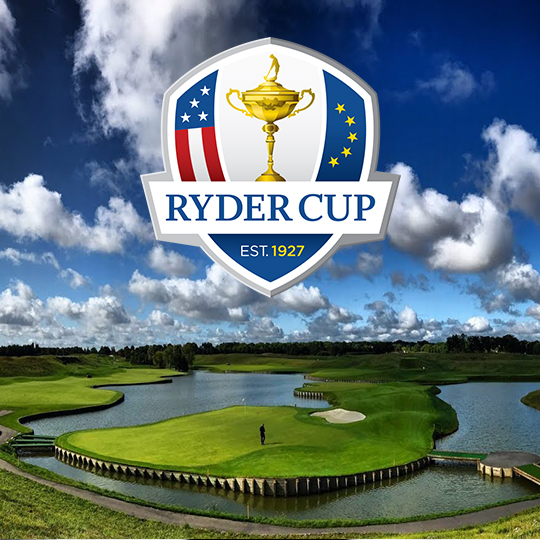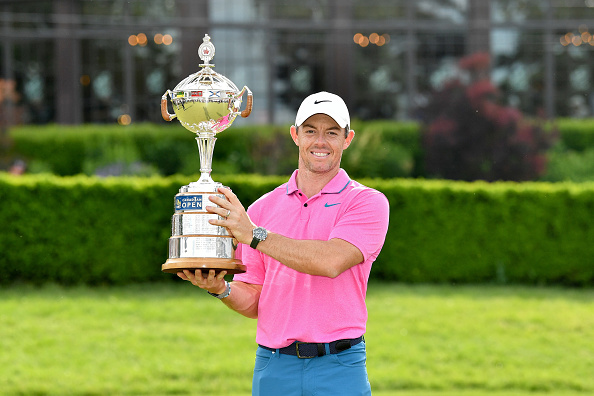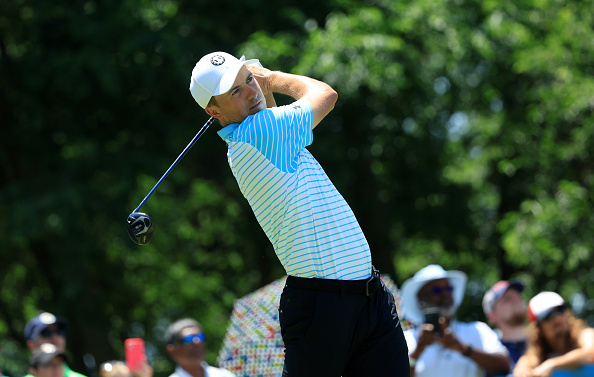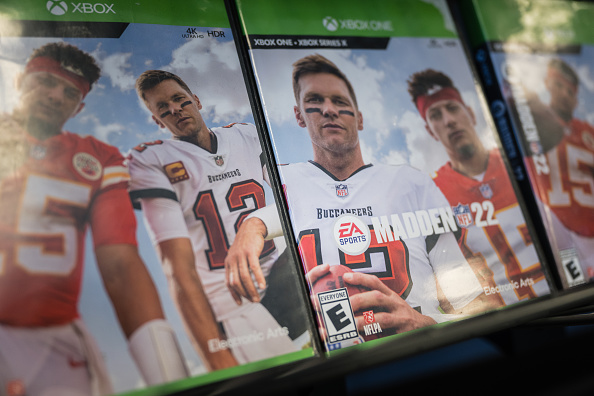It is time again for the biannual continental clash that captures the interest of the golf world and casual sports fans alike. Today though Sunday, Le Golf National in Paris, France will serve as host to the 42nd Ryder Cup.
History of the Competition
The contest is named in honor of English businessman Samuel Ryder, who donated the trophy that is battled for at the conclusion of every other season.
The American team dominated the event from its inception, dropping only two contests to the team composed of only players from Great Britain between the first event in 1927 and 1971.
The European side adopted its first expansion in 1973, adding players from Ireland to try and make the event more competitive, but lost each time in ’73, ’75, and ’77.
The event became much less lopsided when the European team expanded again, accepting all players from continental Europe beginning in 1979. Since that time, Team Europe has managed to go 10-8-1.
Ties?
Yes, the Ryder Cup has ties, sort of. Though the European tie of 1989 is listed as such in the official record, they actually are considered the victors of that year, as in the event of a tie at the Ryder Cup, the previous champion retains their status. The 1987 team helped keep the Cup across the Atlantic, by virtue of winning the last time the competition was held before ’89. Got it?
But Ties are Lame!
Agreed, but it creates for some real Sunday drama if things are still tight on the NBC scoreboards. The team who cannot retain has to really go for it time and again, and schedule their matches more aggressively. It also forces the other side to either play it safe in hopes of holding them off, or to “play to win” and close out the other side. The United States took the ’16 Cup at Hazeltine, so a tie this time around will mean an American victory.
Team Europe
To qualify for the European side, you must:
Be of European origin.
Finish in the top four of the “Race to Dubai” standings. The RTD is the European PGA Tour equivalent of the Fedex Cup, a yearlong accumulation of points toward being named the #1 player for that season. The automatic bids earned by this method for ’18 are:
- Race to Dubai and Open Championship winner (Francesco Molinari Italy)
- Runner up at the ’18 U.S. Open and constant feature of leaderboards all season long on both Tours (Tommy Fleetwood England)
- Former World Number One ranked player, and four time major champion (Rory McIlroy Northern Ireland)
- Ten time winner on the European Tour (Alex Noren Sweden)
Finish in the top four on the World Golf Rankings Points List (unless you’ve already qualified due to your RTD standing). The automatic bids earned by this method ’18 are:
- ’18 Open Championship runner-up, and ’18 Fedex Cup champion Justin Rose (England)
- The ever-consistent Tyrell Hatton (England) who carded two top-ten finishes in majors this year.
- Top five finishes at both The Masters and PGA Championship helped Jon Rahm (Spain) earn his spot.
- Thorbjorn Olesen (Denmark) rounds out the automatic qualifiers with his World Ranking of 44th, and is a five time winner on the European Tour.
The final four slots are “Captain’s Picks” awarded by the acting leader of the Ryder Cup team. This year, Europe is helmed by Thomas Bjorn (Denmark) a 15-time winner on the European tour. The Ryder Cup veteran was the first Dane to ever qualify for the tournament. Bjorn’s Captain’s Picks are:
- Paul Casey (England)
- Sergio Garcia (Spain)
- Ian Poulter (England)
- Henrik Stenson (Sweden)
As is the common case in most years, Bjorn opted for experience with his captain’s picks. Casey is solid and no stranger to this competition. Garcia has a Green Jacket at home, Stenson has won an Open Championship and Fedex Cup playoff, while Poulter has been a thorn in the side of team USA in this competition for years.
Team USA
To qualify for Team USA, you must:
Be of origin within the United States.
Be among the top eight players on the Ryder Cup points list. Ryder Cup points were up for grabs during:
2017 Major Championships
2017 World Golf Championship (WGC) events and The Players Championship (TPC) events.
2018 Major Championships (double points to the winner, 50% extra for making the cut)
2018 PGA Tour events (held between 1/1 and 8/12)
The Team USA members who qualified on these merits are:
- Having won three of the last seven majors he’s played for Brooks Koepka was the runaway top qualifier
- World Number One ranked player Dustin Johnson
- ’17 PGA Championship winner, who was a threat on leaderboards all season long Justin Thomas
- ’18 Masters Champion, the ever controversial and gruff Patrick Reed
- One of the longest players in the history of the tour, and two time Masters champion, southpaw Bubba Watson
- Wunderkind turned superstar and former world number one ranked player Jordan Spieth
- Fan favorite Rickie Fowler
- The steady former U.S. Open Champion and Ryder Cup veteran Webb Simpson
Team USA is also allotted four Captain’s Picks. Team USA is led by decorated Ryder Cup veteran Jim Furyk, who in his career won a U.S. Open, has shot a tour record round of 58, and was a member of “The Comeback” team that overcame an enormous deficit to capture the ’99 Ryder Cup at Brookline Country Club. Furyk used his selections on:
- Tiger Woods
- Bryson DeChambeau
- Phil Mickelson
- Tony Finau
Woods has rallied from his personal troubles and spinal fusion surgery to set the tour ablaze once more as he plays into his 40s, capping his season with a win at the Tour’s final event of the season at The Tour Championship, his first since ’13.
DeChambeau really broke out this season with three victories, including two during the FedEx Cup playoffs, entering the Tour Championship as the leader. His signature hat should fit right in on the outskirts of Paris.
Mickelson has been a part of Ryder Cup teams for decades now, and a staple of the American style with his daring drives, gambling approaches and scrambling ability to make up for both.
Finau may be most well known for severely injuring his ankle after nailing a hole in one at this year’s Masters Par 3 contest. That shouldn’t take away from the fact that he had a great year and earned his spot by being a consistent player despite finishing fifteenth in the Ryder Cup points standings.
The Format
Part of the great draw of these matches is that a strictly individual sport gets turned on its head, and fellow country (or continental) men band together to take down their rivals from across the Atlantic. They can be friends again next week.
On Friday and Saturday, you’ll be seeing four-ball and foursomes. All matches are two versus two, pairing versus pairing.
In four-ball, each player plays their own ball, with the lowest score winning the hole. If scores match, the hole is halved.
In foursomes, each team alternate shots, with one player providing the tee shots for even holes, the other odd. They alternate shots from that point until the hole’s completion. Lowest score wins the hole. If the scores match, the hole is halved.
On Sunday, the tournament cranks up with a day filled of head to head match play action. One on one all afternoon and into the early evening, if necessary.
No match has to go all eighteen holes, as if there is a deficit that cannot be overcome, the winner is declared. Leading by 4 with 3 holes to play, the leading team is awarded a point, going on the board as the winner, 4&3. If a match is tied after 18 there is no playoff, and each team is awarded half a point.
The first team with 14 and a half total points wins the Ryder Cup. A draw will revert the cup to the reigning champion, Team USA.
What to Expect
Just the eye test tells you what a favorite Team USA is on paper. Featuring a total of 31 Major Championships, it’s the best team they’ve ever sent overseas to compete. Overseas being the operative word, as the American team has not won on foreign soil since 1993. It’s quite the team, but that is a substantial drought, and to do so, they’ll have to end it on only the second European sited Ryder Cup to be held in Continental Europe (outside of the U.K.).
The galleries are known to be rowdy, and during the telecast, you’ll make no mistakes differentiating the roars that follow an American or European success. A different set of fans gets their chance to attend and make up that famous raucous crowd.
That said, given their talent, experience, and depth an American defeat would be a massive underachievement. The European team features five rookies to only three on Team USA. The three American rookies are all among the top seventeen ranked in the world.
The action at Le Golf National does suffer some here due to the time difference between France and the U.S. means you’ll have to have some late nights or early mornings, set that DVR, and stay off of social media if you’d like to experience the tournament organically.
Golf’s meaningful team competition is back, enjoy every stroke for these three days, we won’t get them again until 2020 at Whistling Straits.







